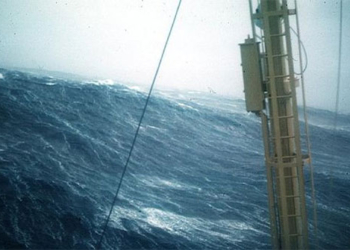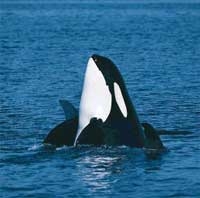 The sea suddenly turned a vibrant red, then shifted to a deep blue, and finally to a pitch-black color resembling sewage. Crabs and fish lay dead in droves, and the corals turned pale white; seaweed and seagrass also perished. Most marine life was obliterated. In the following days, a foul smell rose… This was the scene caused by “red tide” in the waters off Bình Thuận a few years ago.
The sea suddenly turned a vibrant red, then shifted to a deep blue, and finally to a pitch-black color resembling sewage. Crabs and fish lay dead in droves, and the corals turned pale white; seaweed and seagrass also perished. Most marine life was obliterated. In the following days, a foul smell rose… This was the scene caused by “red tide” in the waters off Bình Thuận a few years ago.
“Red tide” or the “blooms” of algae refers to the phenomenon of explosive algal growth. The “bloom” of algae can turn the sea water red, green, gray, or even the color of rice husk… This phenomenon of “blooming” is often accompanied by a rapid decrease in oxygen levels in the water, which is the reason behind the deaths of many marine species in both natural habitats and aquaculture. According to Dr. Nguyễn Ngọc Lâm, a researcher at the Institute of Oceanography in Nha Trang, the spores of algae are already present in seawater and can “bloom” anywhere under favorable conditions, such as rising temperatures, poor water exchange, increased nutrient levels in the environment, or marine pollution…
Research results indicate that there are about 70 species of harmful algae along our coast.  The “red tide” disaster in Bình Thuận in mid-July 2002 resulted in approximately 90% of the marine life in the tidal area, including fish and shrimp in cages and rafts, being wiped out; the environment suffered severe pollution and took several months to recover. “Red tide” also caused 82 people to be hospitalized after swimming in the sea, presenting symptoms of itching and blistering on sensitive skin; the cause was a species of blue-green algae that “bloomed” and released toxins into the seawater. It is important to note that the “bloom” of blue-green algae (cyanobacteria) also occurs in many freshwater reservoirs, posing a health risk to those using this water source.
The “red tide” disaster in Bình Thuận in mid-July 2002 resulted in approximately 90% of the marine life in the tidal area, including fish and shrimp in cages and rafts, being wiped out; the environment suffered severe pollution and took several months to recover. “Red tide” also caused 82 people to be hospitalized after swimming in the sea, presenting symptoms of itching and blistering on sensitive skin; the cause was a species of blue-green algae that “bloomed” and released toxins into the seawater. It is important to note that the “bloom” of blue-green algae (cyanobacteria) also occurs in many freshwater reservoirs, posing a health risk to those using this water source.
There are also species of algae that do not “bloom” but produce toxins; fish and bivalves that consume these algae accumulate toxins in their bodies. To date, researchers have identified 6 symptoms of poisoning in humans from consuming species that accumulate algal toxins. These toxins are not destroyed during cooking and do not affect the taste of seafood. Therefore, consumers, including fishermen, may not detect the algal toxins in their food.  In our country, the Center for Food Safety and Veterinary Hygiene for Aquaculture (under the Ministry of Fisheries) is responsible for monitoring the safety of seafood (primarily bivalve mollusks) exported to the European market. However, many localities that cultivate green mussels and other bivalve mollusks have not prioritized this issue.
In our country, the Center for Food Safety and Veterinary Hygiene for Aquaculture (under the Ministry of Fisheries) is responsible for monitoring the safety of seafood (primarily bivalve mollusks) exported to the European market. However, many localities that cultivate green mussels and other bivalve mollusks have not prioritized this issue.
Dr. Nguyễn Ngọc Lâm believes that we can mitigate the damage caused by “red tide” if appropriate investments are made in basic research. The research subjects here should not only include harmful algae but also investigate factors affecting the marine environment such as physical and chemical properties, temperature, currents, wastewater discharge into the sea, and socio-economic characteristics… Additionally, there is a need for awareness and education among fishermen that upon detecting signs of “red tide”, they should immediately report to the authorities to implement necessary measures, such as relocating shrimp and fish cages or changing water in aquaculture ponds… Monitoring harmful algae in a small area (for example, Florida Bay) in the U.S. costs millions of dollars each year. Annually, China also allocates a substantial budget for research and monitoring of harmful algae. In our country, investment in this field remains modest.




















































